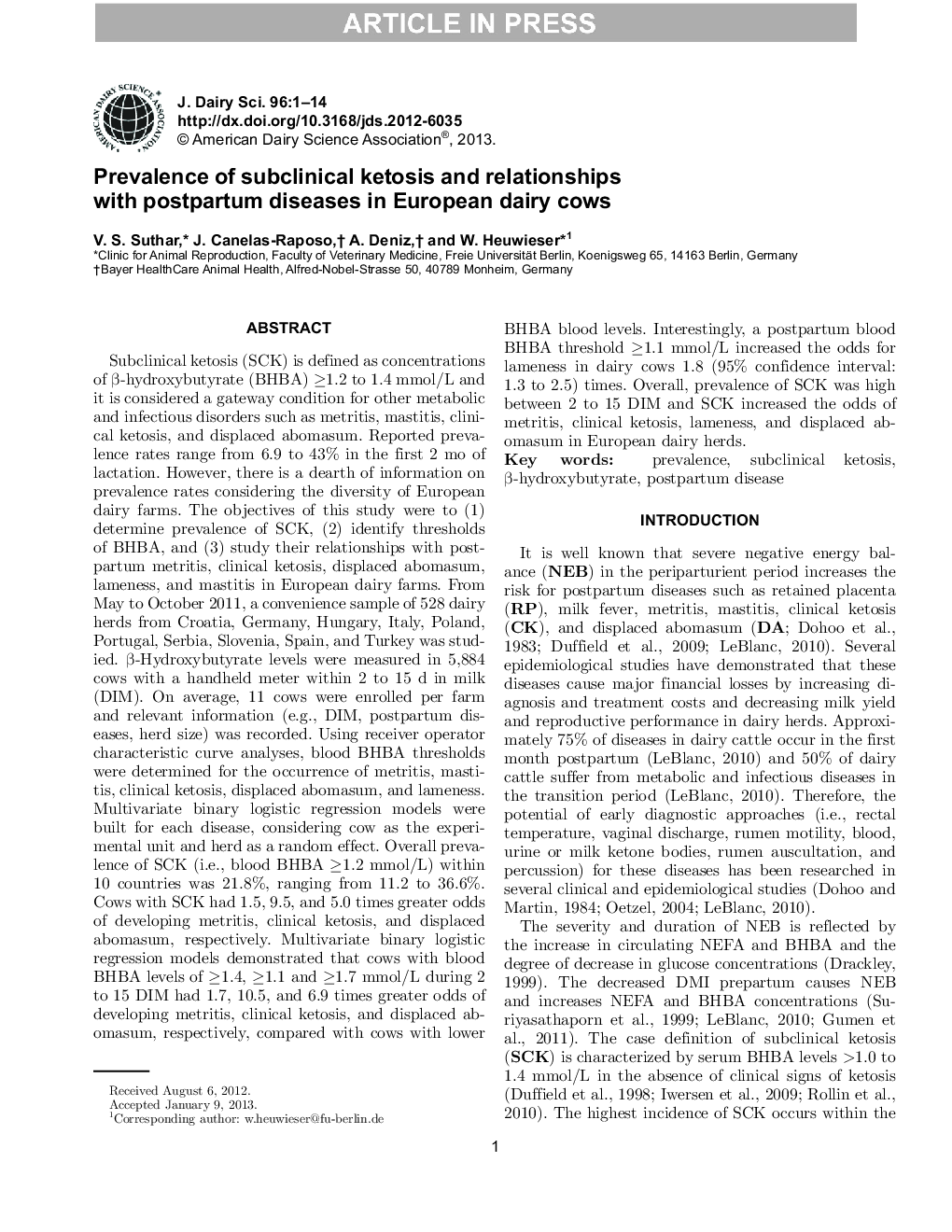| Article ID | Journal | Published Year | Pages | File Type |
|---|---|---|---|---|
| 10978401 | Journal of Dairy Science | 2013 | 14 Pages |
Abstract
Subclinical ketosis (SCK) is defined as concentrations of β-hydroxybutyrate (BHBA) â¥Â 1.2 to 1.4 mmol/L and it is considered a gateway condition for other metabolic and infectious disorders such as metritis, mastitis, clinical ketosis, and displaced abomasum. Reported prevalence rates range from 6.9 to 43% in the first 2 mo of lactation. However, there is a dearth of information on prevalence rates considering the diversity of European dairy farms. The objectives of this study were to (1) determine prevalence of SCK, (2) identify thresholds of BHBA, and (3) study their relationships with postpartum metritis, clinical ketosis, displaced abomasum, lameness, and mastitis in European dairy farms. From May to October 2011, a convenience sample of 528 dairy herds from Croatia, Germany, Hungary, Italy, Poland, Portugal, Serbia, Slovenia, Spain, and Turkey was studied. β-Hydroxybutyrate levels were measured in 5,884 cows with a handheld meter within 2 to 15 d in milk (DIM). On average, 11 cows were enrolled per farm and relevant information (e.g., DIM, postpartum diseases, herd size) was recorded. Using receiver operator characteristic curve analyses, blood BHBA thresholds were determined for the occurrence of metritis, mastitis, clinical ketosis, displaced abomasum, and lameness. Multivariate binary logistic regression models were built for each disease, considering cow as the experimental unit and herd as a random effect. Overall prevalence of SCK (i.e., blood BHBA â¥Â 1.2 mmol/L) within 10 countries was 21.8%, ranging from 11.2 to 36.6%. Cows with SCK had 1.5, 9.5, and 5.0 times greater odds of developing metritis, clinical ketosis, and displaced abomasum, respectively. Multivariate binary logistic regression models demonstrated that cows with blood BHBA levels of â¥Â 1.4, â¥Â 1.1 and â¥Â 1.7 mmol/L during 2 to 15 DIM had 1.7, 10.5, and 6.9 times greater odds of developing metritis, clinical ketosis, and displaced abomasum, respectively, compared with cows with lower BHBA blood levels. Interestingly, a postpartum blood BHBA threshold â¥Â 1.1 mmol/L increased the odds for lameness in dairy cows 1.8 (95% confidence interval: 1.3 to 2.5) times. Overall, prevalence of SCK was high between 2 to 15 DIM and SCK increased the odds of metritis, clinical ketosis, lameness, and displaced abomasum in European dairy herds.
Related Topics
Life Sciences
Agricultural and Biological Sciences
Animal Science and Zoology
Authors
V.S. Suthar, J. Canelas-Raposo, A. Deniz, W. Heuwieser,
